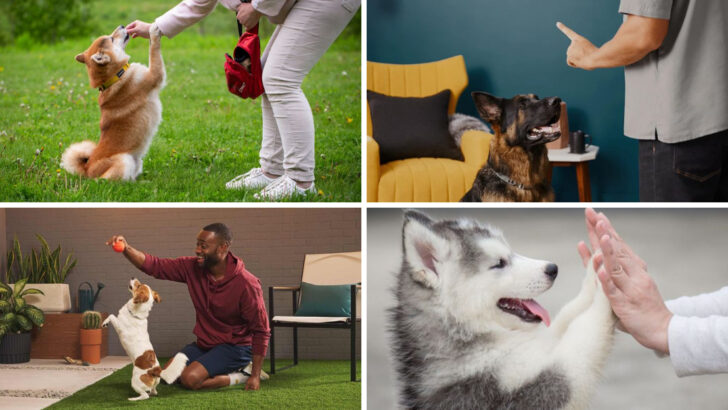A well-trained dog isn’t just a dream—it’s the difference between peaceful walks and a leash-yanking disaster.
Dogs are smart, but they’re not mind-readers. Without proper training, they’ll chase squirrels into traffic, jump on guests like overcaffeinated kangaroos, and turn your favorite shoes into chew toys. Teaching them the right commands isn’t about control—it’s about communication, trust, and keeping them safe.
From lifesaving skills like “come” and “stay” to sanity-saving tricks like “leave it” and “drop it,” these 24 commands can transform a mischievous pup into the perfect companion.
Ready to turn chaos into calm? Let’s dive into the must-know commands that every dog—big or small, stubborn or eager—should master!
Sit
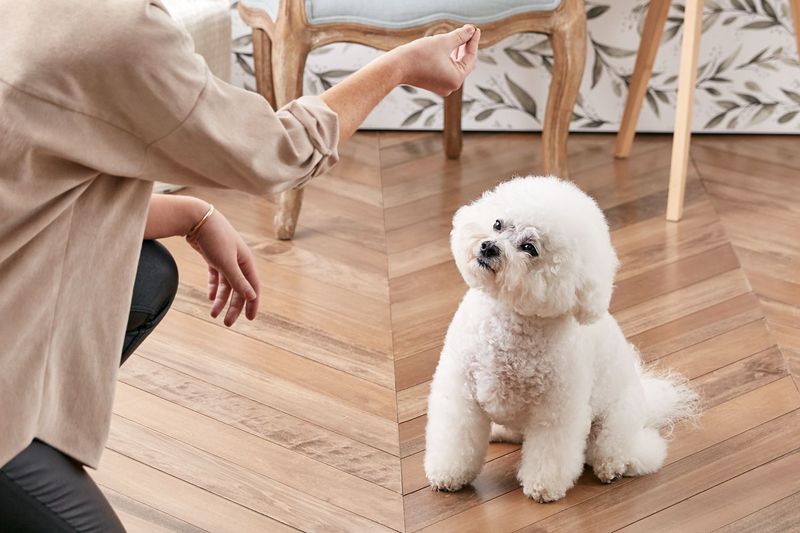
Teaching your dog to sit is a foundational command that paves the way for more complex training. Start by holding a treat close to your dog’s nose, then move your hand up, allowing their head to follow the treat and causing their bottom to lower. Once they’re in a sitting position, say “sit,” give them the treat, and show affection. Repeat this sequence a few times every day until your dog masters it. This command is useful to keep your dog calm and focused, especially in stimulating environments like parks or busy streets, enhancing control and communication.
Stay
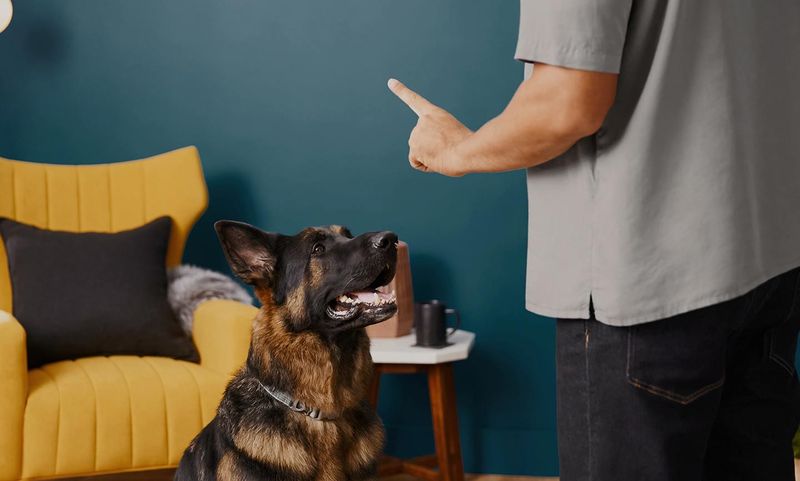
The “stay” command is crucial for your dog’s safety, preventing them from running into dangerous situations. Begin with your dog sitting, then hold your palm out and say “stay.” Take a few steps back, rewarding them if they remain still. Gradually increase the distance and duration over time. Consistency and patience are key, as this command requires significant self-control from your dog. It’s particularly useful in various scenarios, like when guests arrive at your home or during outdoor activities, ensuring your dog remains calm and obedient under different circumstances.
Come

The “come” command is vital, especially for off-leash activities. Start indoors or in a fenced area; kneel down, open your arms, and excitedly say “come.” Reward your dog with treats and praise when they respond correctly. Practice regularly, gradually increasing the challenge by adding distractions or practicing in more open spaces. This command helps prevent potential dangers, like running into traffic or getting lost, by ensuring your dog returns to you promptly. It strengthens your bond and communication, giving you peace of mind during outdoor adventures.
Down

Training your dog to lie down on command helps in managing their excitement and energy levels. Start with your dog in a sitting position, hold a treat in your hand, and slowly lower it to the ground. As their body follows the motion and they lie down, say “down,” then reward them. This command is beneficial during mealtimes, when guests arrive, or in high-energy situations, promoting calm behavior. Consistent practice in various settings will reinforce the behavior, making it a versatile tool in your training toolbox.
Leave It
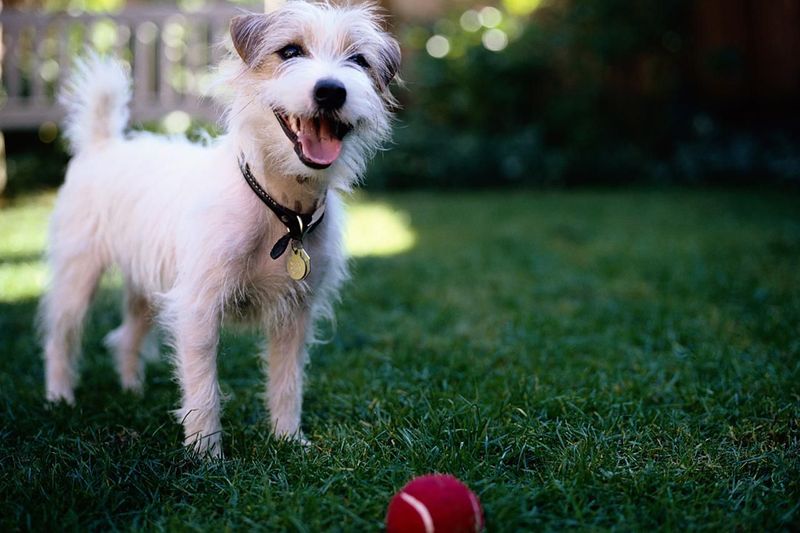
The “leave it” command prevents your dog from grabbing potentially harmful objects. Start with a treat in both hands; show one closed fist with a treat inside, saying “leave it.” Wait until your dog loses interest and rewards them with the treat from the other hand. Practice daily, gradually introducing distractions to strengthen their impulse control. This command is essential for keeping your dog safe around hazardous items, in crowded places, or during walks, ensuring they ignore tempting or dangerous objects.
Heel

Teaching your dog to heel ensures they walk beside you calmly, making walks enjoyable and safe. Begin indoors or in a quiet area; with your dog on a leash, start walking and say “heel.” Reward them for staying by your side. Gradually increase the duration and distractions during practice. This command is particularly helpful in crowded places or when walking near traffic, as it keeps your dog close and under control. Regular practice enhances your bond and communication, making outdoor activities more pleasant for both of you.
Wait

The “wait” command is crucial for preventing impulsive actions, especially in potentially dangerous situations. Start with your dog on a leash, ask them to sit, and say “wait” before crossing a street or doorway. Reward them for staying put. Gradually practice without a leash indoors. This command is beneficial for teaching patience and control, enhancing their safety and your peace of mind. It’s especially useful for preventing accidents during walks or ensuring they remain calmly in place until you give further instructions.
Off
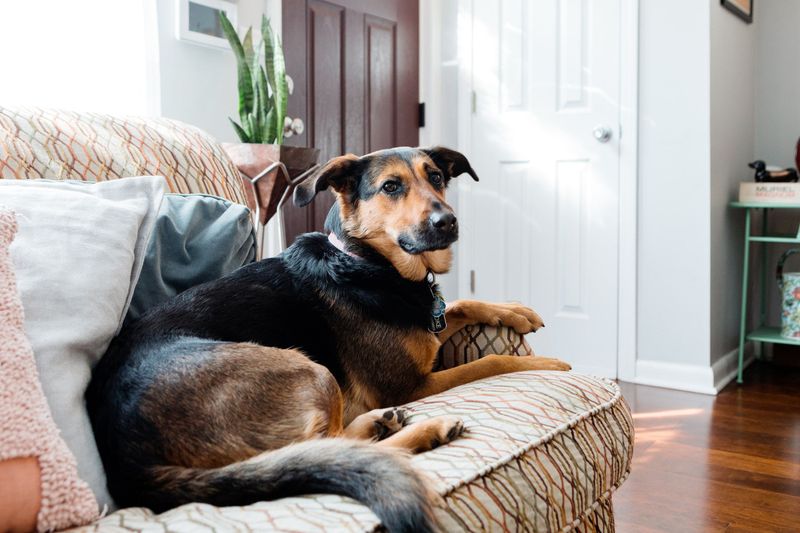
Teaching the “off” command helps manage your dog’s behavior around furniture or people. When your dog jumps on furniture, say “off” and encourage them to the floor with a treat. Praise them once they comply. Consistent practice ensures they learn boundaries and respect household rules. This command is helpful in maintaining cleanliness and order, especially in homes with guests or small children. Reinforcing this behavior promotes harmony in your living space, ensuring your dog understands where they are allowed to be and where they’re not.
Drop It
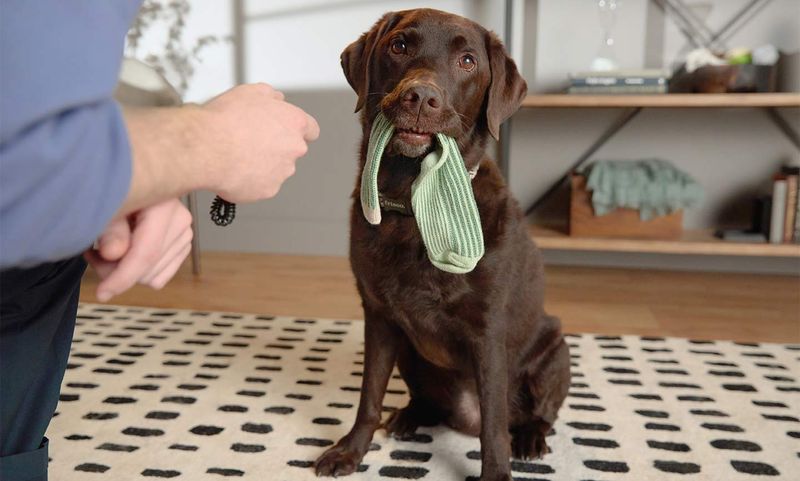
The “drop it” command is essential for preventing resource guarding and ensuring your dog releases objects safely. During play, when your dog holds a toy, say “drop it” and offer a treat in exchange. Praise them for complying. Practice regularly to reinforce the behavior. This command is crucial if your dog picks up dangerous items or during play sessions with other dogs, preventing conflicts. It ensures your dog’s safety and fosters trust, as they learn to release objects willingly, knowing they will be rewarded.
Watch Me

The “watch me” command is useful for gaining your dog’s attention, especially in distracting environments. Hold a treat by your eyes and say “watch me.” Reward them once they make eye contact. Repeat this exercise, gradually increasing the difficulty by adding distractions. This command enhances your communication and ensures your dog focuses on you, which is particularly useful during training sessions or in crowded places. By teaching your dog to concentrate on you, it strengthens your bond and improves obedience, making it easier to guide them in various situations.
Stand
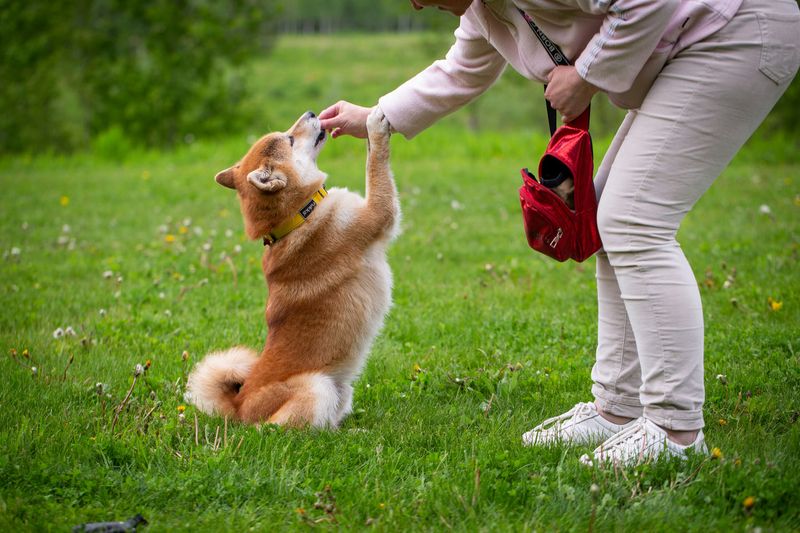
Teaching your dog to stand on command is particularly useful during grooming or veterinary visits. Start with your dog in a sitting position; show them a treat and say “stand” as you move the treat slightly forward. Reward them once they stand. Practice regularly to reinforce the behavior. This command is helpful for checking your dog’s posture or when you want them to stay in place for a short time without sitting or lying down. It adds versatility to your training, ensuring your dog is well-prepared for various situations.
No

The “no” command is fundamental for correcting undesired behaviors. When your dog attempts something inappropriate, like jumping on furniture or nipping, firmly say “no” and redirect them to a suitable activity, praising them for complying. Consistent use of this command helps establish boundaries and ensures your dog understands unacceptable behaviors. It’s crucial for maintaining order in your home and during outdoor activities. Teaching “no” provides clarity and helps your dog distinguish between right and wrong actions, fostering a respectful and well-behaved pet.
Quiet
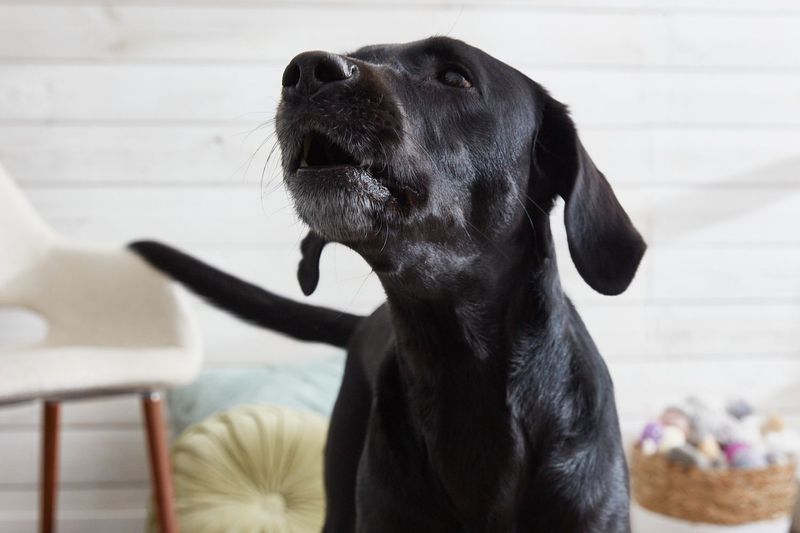
The “quiet” command is essential for managing excessive barking. When your dog barks, say “quiet” and wait for a pause before rewarding them. Practice consistently, starting in a low-distraction environment. Gradually introduce more challenging scenarios, like the doorbell ringing. This command is particularly helpful for maintaining peace at home and during walks, ensuring your dog doesn’t disturb neighbors or react excessively to stimuli. By teaching “quiet,” you promote a calm and controlled environment, enhancing your communication and relationship with your dog.
Place
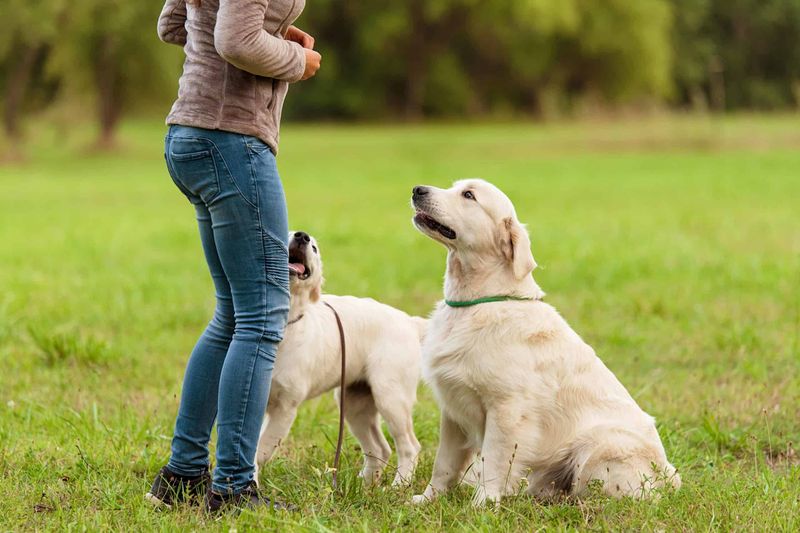
The “place” command instructs your dog to go to a specific area, like their bed or mat. Begin by guiding your dog to the designated spot, saying “place,” and rewarding them for staying there. Gradually increase the duration and distractions during practice. This command is useful for teaching your dog to settle down, especially during mealtimes or when guests arrive. By designating a specific area for them to relax, you create a peaceful environment and reinforce boundaries, ensuring your dog knows where they’re expected to be in different situations.
Bed

Teaching your dog the “bed” command helps establish a bedtime routine and promotes good sleeping habits. Guide your dog to their sleeping area while saying “bed,” rewarding them for staying there. Practice regularly to reinforce the behavior. This command is particularly useful for creating a calm nighttime routine, ensuring your dog knows when it’s time to settle down. By establishing a consistent bedtime, you foster a sense of security and comfort, making sure your dog has a peaceful and restful sleep, which contributes to their overall well-being.
Shake
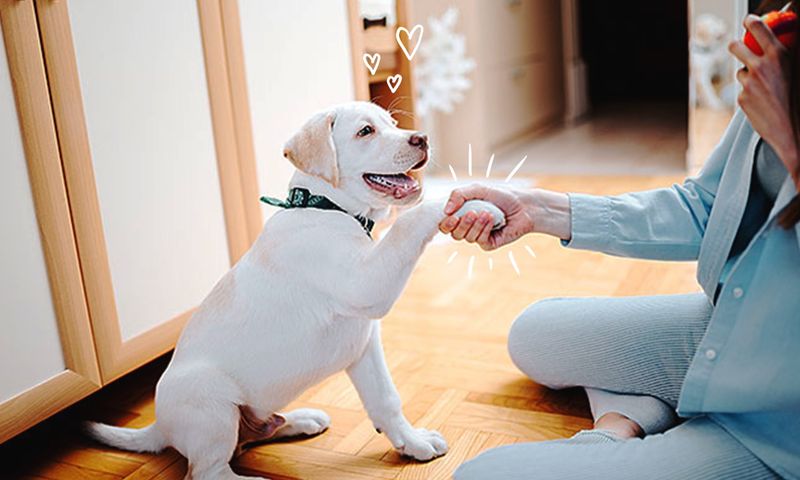
Teaching your dog to shake hands is a fun and engaging trick that also promotes good manners. Start by holding your dog’s paw and saying “shake,” then reward them. Gradually encourage them to offer their paw independently. This command is a great way to entertain guests and strengthen your bond with your dog. It’s also beneficial for grooming, as it familiarizes your dog with having their paws handled. Regular practice ensures they perform the trick confidently, adding an element of fun to your training sessions and enhancing your dog’s social skills.
Speak
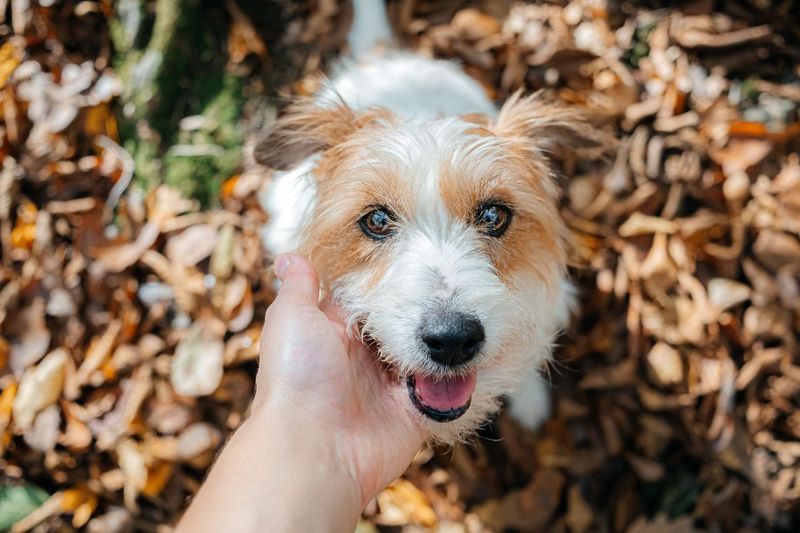
The “speak” command encourages your dog to bark on cue, allowing you to control when they vocalize. Start by eliciting a bark with a stimulus, such as a toy, while saying “speak.” Reward them once they bark. Practice consistently and pair it with the “quiet” command to teach control over their barking. This command is useful for alerting you to guests or unusual activities, enhancing security. By teaching your dog to “speak,” you channel their natural instincts productively, ensuring they bark at appropriate times and remain quiet when needed.
Fetch

Teaching your dog to fetch is a fantastic way to provide them with exercise and mental stimulation. Start by throwing a toy a short distance and encouraging your dog to retrieve it, saying “fetch.” Reward them when they return with the toy. Practice regularly, gradually increasing the distance and complexity. This command is great for burning off energy, enhancing your dog’s physical health, and improving their focus and recall abilities. Playing fetch also strengthens your bond, providing a fun and interactive way to engage with your pet during playtime.
Touch
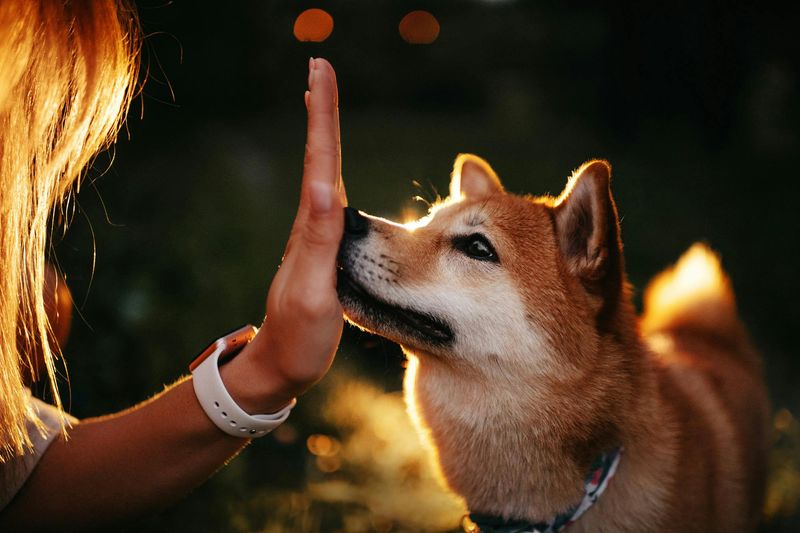
The “touch” command teaches your dog to make contact with an object, usually with their nose. Start by holding an object close to your dog, saying “touch,” and rewarding them when they make contact. Practice with various objects and at different heights. This command is useful for directing your dog’s movement and can be a foundation for more complex tricks, like agility training. By teaching “touch,” you enhance your dog’s focus and coordination, making it a versatile tool for engaging their mind and body in a productive way.
High Five

Teaching your dog to give a high five is a delightful trick that showcases their intelligence and coordination. Start by holding up your hand and encouraging your dog to raise their paw, saying “high five.” Reward them for successful attempts. This command is a fun way to interact with your dog and impress friends and family. It also enhances your dog’s social skills and confidence, encouraging positive interactions with people. Regular practice ensures they perform the trick reliably, adding a playful element to your training sessions and strengthening your bond.
Roll Over
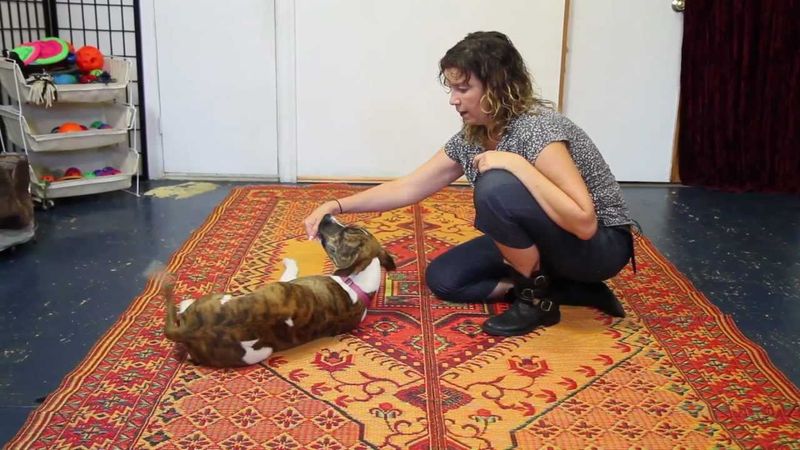
The “roll over” command is an engaging trick that encourages your dog to follow directional cues. Start with your dog lying down, then guide them with a treat to roll over, saying “roll over.” Reward them once they complete the action. Practice regularly to reinforce the behavior. This command is a fun way to provide mental stimulation and exercise, enhancing your dog’s physical agility and focus. It also strengthens your bond by encouraging positive and interactive training sessions, making it a delightful addition to your dog’s repertoire of tricks.
Take It
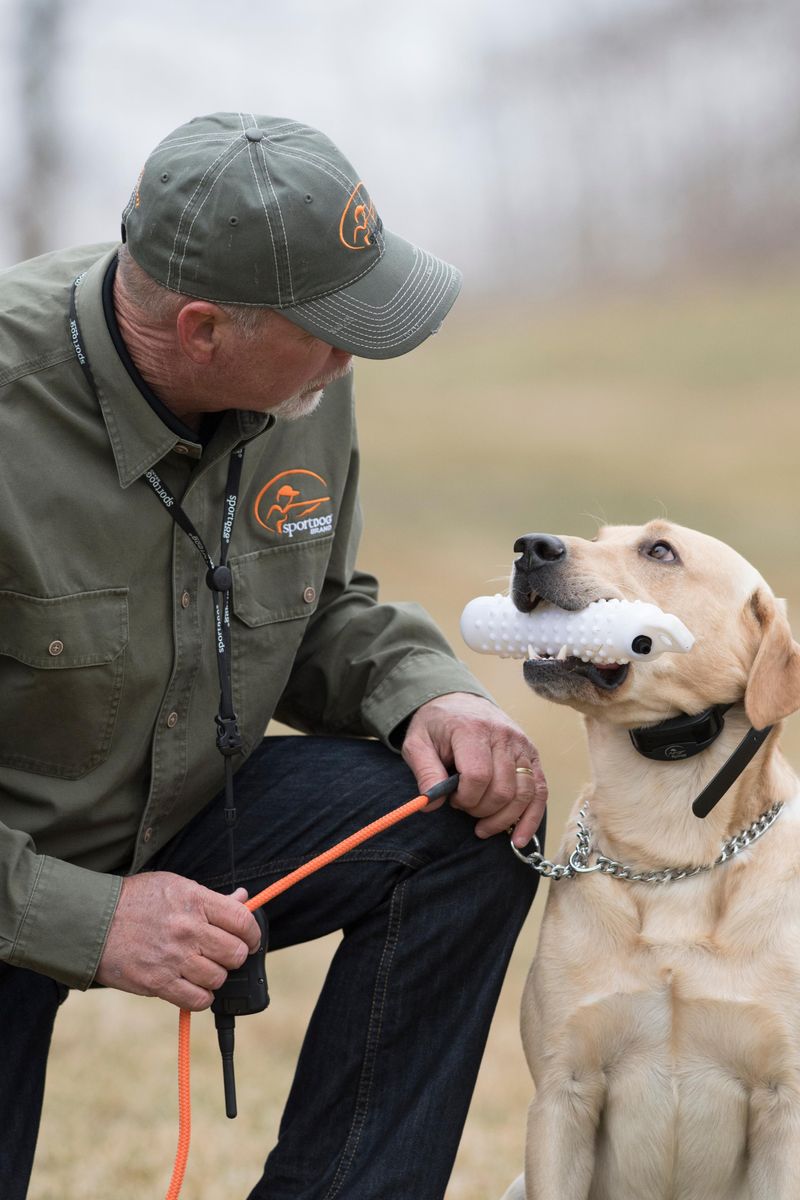
Teaching your dog the “take it” command ensures they understand when it’s appropriate to pick up items. Start by offering a toy or treat, saying “take it,” and rewarding them for responding correctly. This command is useful for games like tug-of-war and helps in teaching object distinction. It’s essential for developing impulse control, ensuring your dog waits for your cue before grabbing anything. Regular practice reinforces their understanding, making it easier to manage their behavior during play and in everyday situations, ensuring they only take objects when permitted.
Kennel
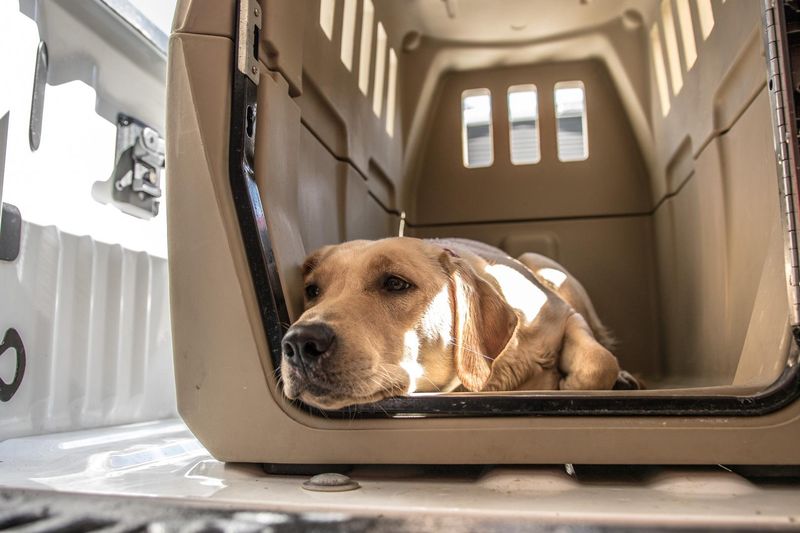
Teaching your dog the “kennel” command helps them associate their crate with positive experiences. Guide your dog into their crate, saying “kennel,” and reward them for entering. Gradually increase the duration they stay in the kennel. This command is essential for crate training, promoting a safe and comfortable environment for your dog. It’s particularly useful during travel or when you need your dog to be secure and calm. By establishing a positive kennel routine, you ensure your dog feels secure and content, enhancing their overall well-being and adapting to different environments.
Bow
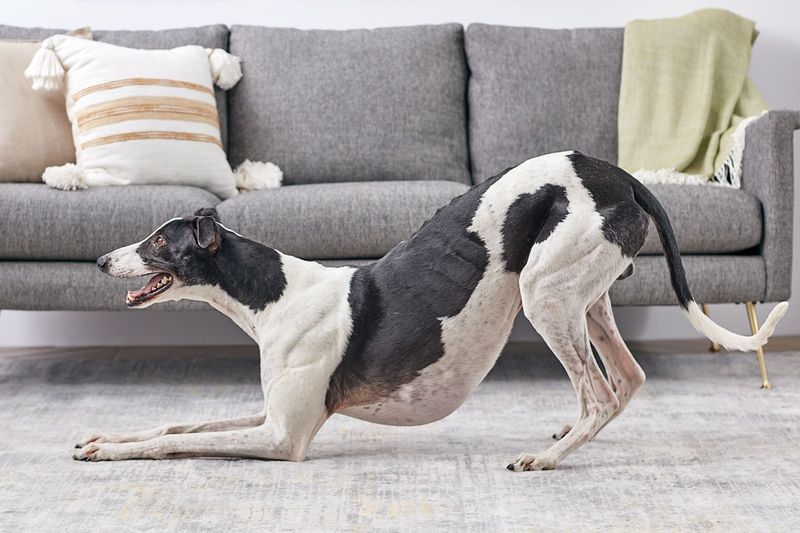
Teaching your dog to bow is an adorable trick that enhances their flexibility and obedience. Start by having your dog stand, then gently guide their head down while keeping their rear up, saying “bow.” Reward them once they achieve the position. This command is a fun way to demonstrate your dog’s skills and adds variety to their training routine. It also provides a gentle stretch, promoting physical health. Regular practice ensures they perform the trick confidently, making it a charming addition to their repertoire and strengthening your bond.

